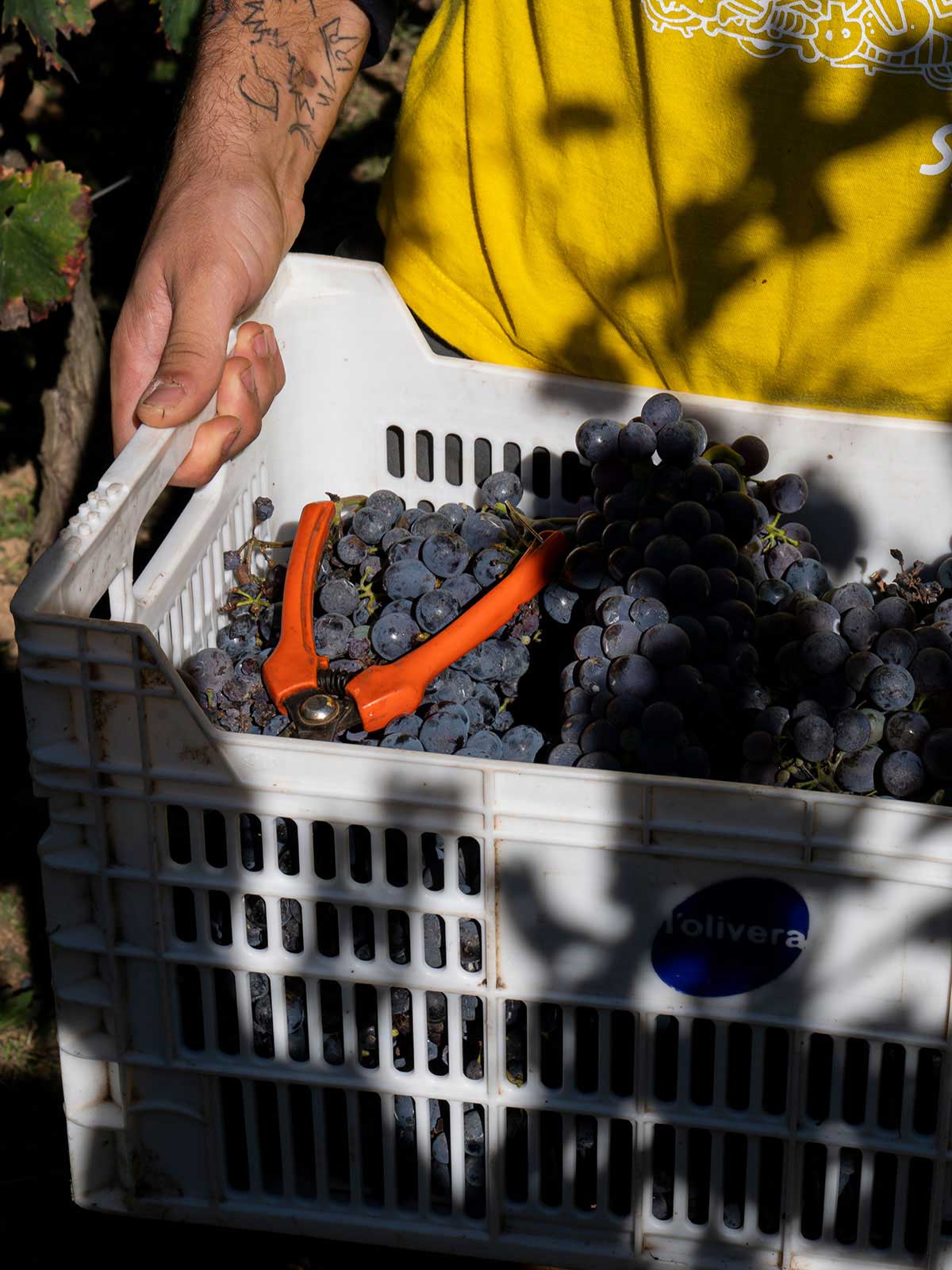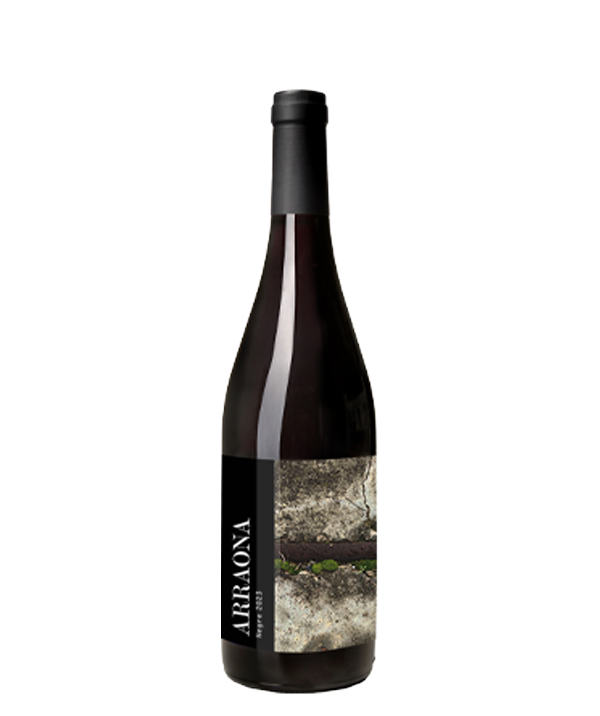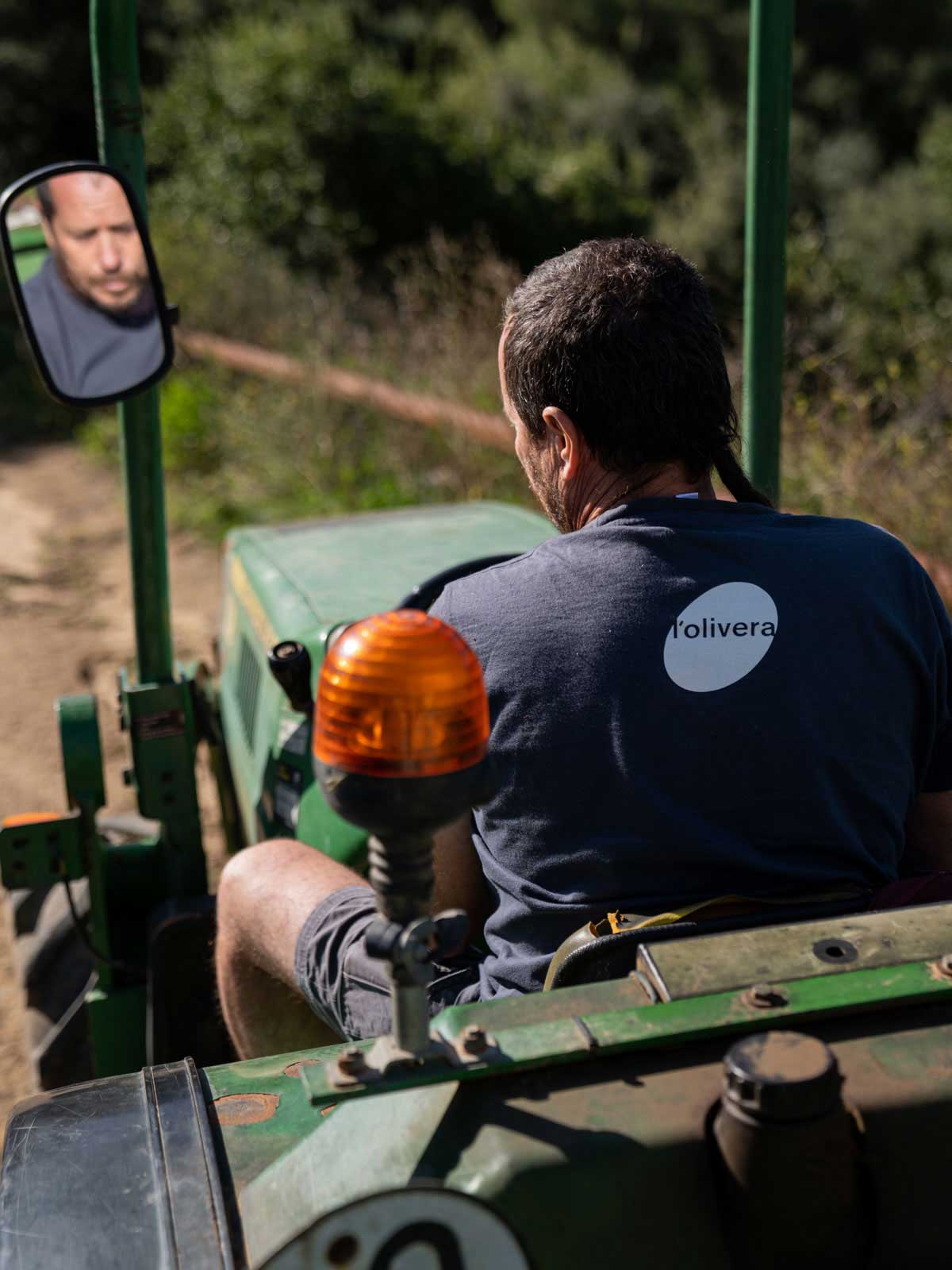Arraona negre
Arraona is the name attributed to the ancient Iberian town of Sabadell. This wine was created with the aim of reclaiming the winegrowing past of the city and recovering farming, cultural and scenic values. We work manually on its production and uphold our commitment to a social and periurban farming initiative at the Can Gambús vineyard in the Sabadell Agricultural Park that L’Olivera has been managing with the Can Calopa team since 2010.

This wine is one of the outsourced microprojects L’Olivera engages in with the aim of strengthening alliances with the local community, sharing experiences and knowledge and helping to promote farming activity across different rural and urban settings. It is the result of an agreement between L’Olivera and Sabadell City Council to recover traditional winegrowing in the municipal area.
Terroir
ORIGIN: Vineyards from the Can Gambús estate in the Sabadell Agricultural Park. The Agricultural Park is an undeveloped protected agroforestry space to the west of the municipal area, between the districts of Castellarnau, Can Gambús and Ca n’Oriac. The land combines forests and streams with rain-fed and irrigated cropland.
SOIL: Chalky clay soil with a variable presence of stones, mainly pebbles, and a good capacity for water retention.
CLIMATE: Climate of a Mediterranean influence, characterised by mild winters, hot summers, moderate temperature changes and scarce and strongly irregular seasonal rainfall. The sea breeze comes along in the afternoon, easing the high summer temperatures.
Varieties
Grenache (88%) and Merlot (12%)
Vine growing
Organic farming. Manual harvest in 10-12 kg crates and selection on the vine.
Wine processing
Fermentation in a stainless-steel at a controlled temperature and aged on the lees for 3 months.
Production
2022 vintage: 2.727 bottles

